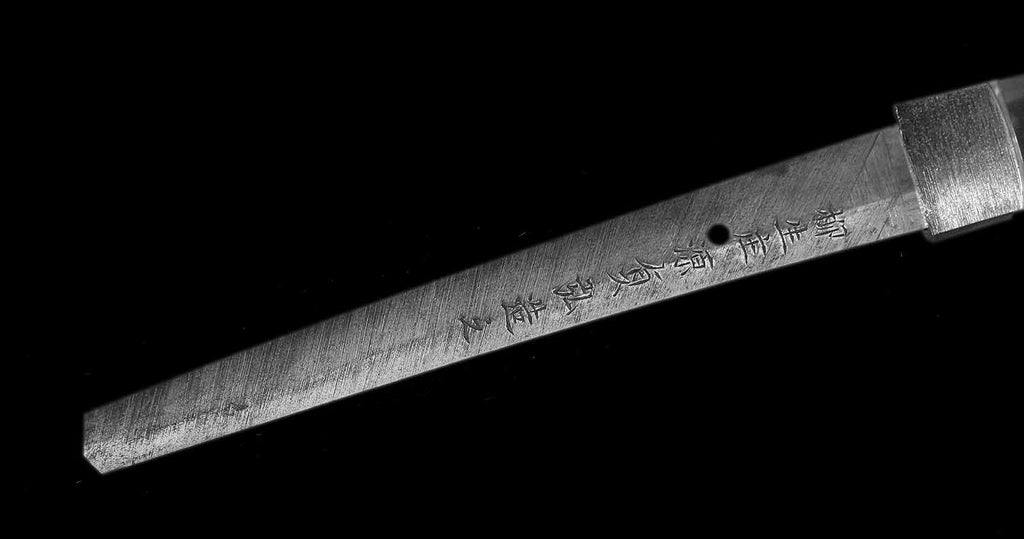What is Yasurime?
Yasurime is a rasp applied to the hiraji and shinogiji of a sword's tang to prevent it from slipping off the tsuka handle. Ancient swords had marks that looked as if they had been simply hammered out, but as time went by, this area also began to attract more attention, and since the Edo period (1603-1867), decorative filing, or kesho yasuri, were increasingly popular. The thickness, direction, and angle of the rasp vary depending on the school, swordsmith, and period, making it an important point in sword appraisal.
Sensuki

This is a mark made by shaping the tang with a plane called a "sen" and is often seen on swords and spears of the Jokoto period. In later periods, when a coarse file was applied vertically as a reissue of the Koto period, it is also called a sensuki.
Kiri-yasuri

This is also called yoko-yasuri, in which the rasp is applied horizontally. It is a rule in the sword world to apply this Kiri-yasuri to the area after the sword has been shortened(suriage).
Katte-sagari-yasuri

Katte-sagari-yasuri is a style of filing downward to the right. Katte means right and sagari means downward.
Katte-agari-yasuri

A file upward to the right is called a katte-agari yasuri. Agari means upward. Left-handed swordsmiths tend to use this type of file.
Sujikai-yasuri

A more steeply angled katte-sagari-yasuri.
Saka-suijikai-yasuri
A more steeply angled katte-agari-yasuri.

O-sujikai-yasuri

A file with a steeper slope than sujikai-yasuri.
Takanoha-yasuri

This name comes from the fact that the file looks like a hawk's wings. Yamato and Mino school swordsmiths favored this type of file.
Higaki-yasuri

A style with many lines crossing each other diagonally to form a wicker fence pattern. Yamato and Mino school swordsmiths favored this type of file.
Kesho-yasuri

This was applied after the Edo period (1603-1868) to further enhance the aesthetics of the tang and is found only on swords of the Shinto and Shinshinto periods. This technique was further developed into the highly decorative style like the kozutsum-yasuri.

Want to buy authentic Samurai swords directly from Japan? Then TOZANDO is your best partner!

Leave a comment: